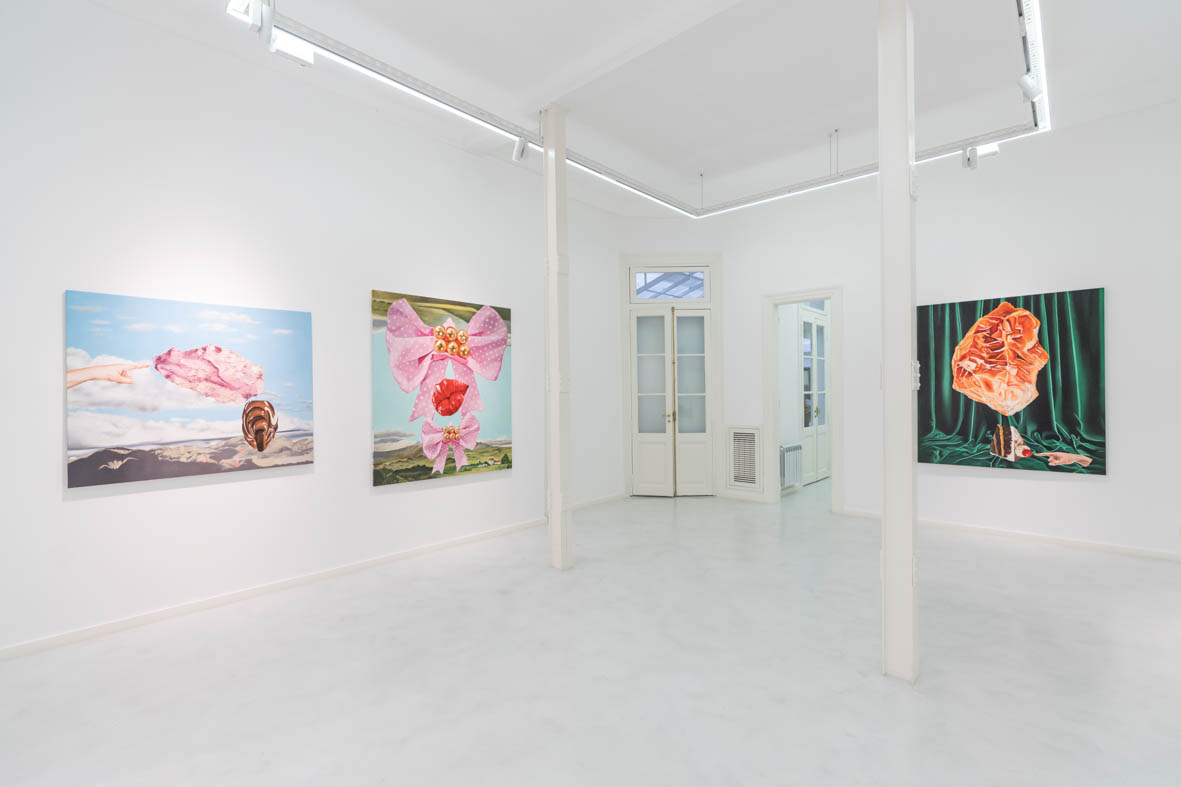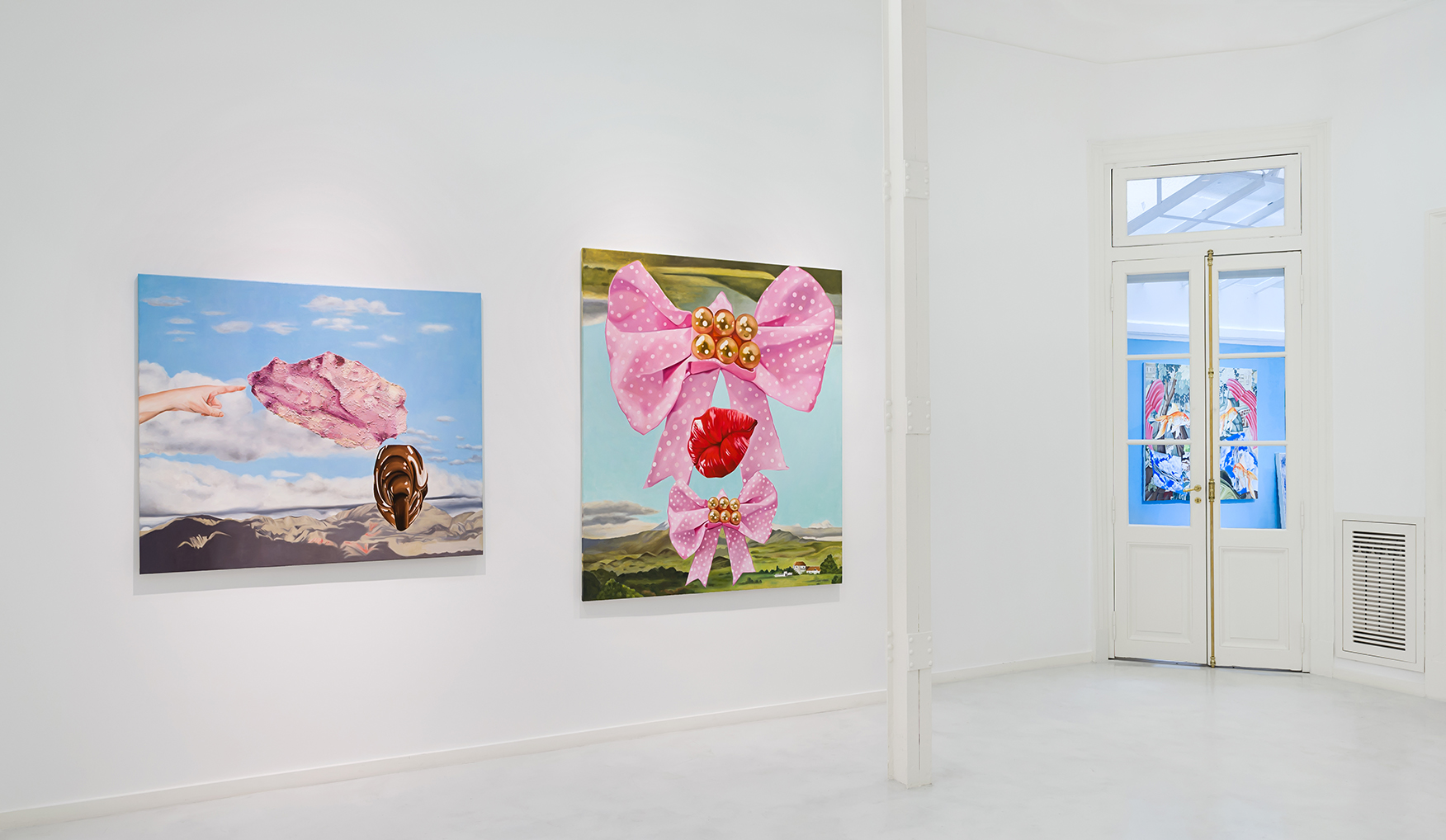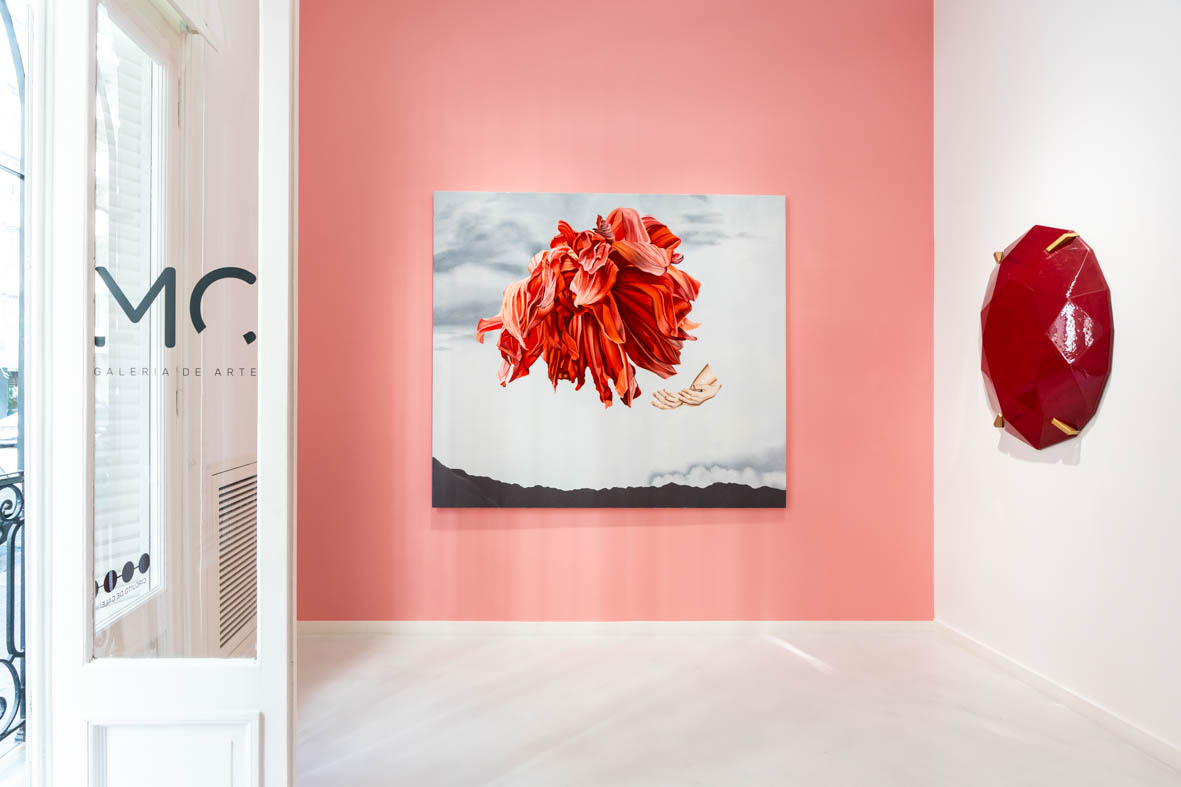Revelaciones
August 15th - 29th September
This exhibition by Cynthia Cohen shows the current state of her perception of the world and the way she understands life and art today. Each painting is an exploration of perceptions that allow her to project internal dynamics outwards. A creative process related to Batlle Planas “inner model” and the free associations of automatism, but with a very different pictorial resolution. It is a shift from consumer pop to metaphysical pop, with elements of camp and surrealism in its use of extravagance, humor and absurdity. As Susan Sontag defines it, Camp is “a sensibility; it is not an idea or a style, but a way of seeing the world”.
The stories are built around situations and images that point her in this new direction. It unites, in a contradictory way, different elements that provoke alienation. The artist is the one who points, who expands the possibilities of the cosmos with new articulations of the real, understanding that the real is also what is hidden and sometimes unhidden. This is what happens in “accept the thoughts that arise”, where the artist constructs a work in which an infinite number of fascinating scenes and thoughts are superimposed, with no apparent logical structure, as happens when we meditate. There are fragments of an antique French Aubusson tapestry, pieces of sashimi, fish, skies, a cornucopia and iron bars.
The hands point and at the same time create paradoxical worlds, as in the scene of the painting “Amazonita”, where an emerald is floating above a mass of green against a mountain landscape. It is the signalling of contradiction, where the absurd is the basis for the production of pictorial discourse. Throughout the Renaissance we find hands with the index finger pointing towards what seems to be the interpretation of the riddle. A secret to be revealed in each story.
We feel the latency of eroticism in tongues coming out of a wallpaper where red prevails in “Libertine”, an installation with digital recreations projected on the walls of the gallery hall.
In “Azurita”, the sensuality of taste is embodied by a tongue licking a creamy cherry, and the senses are heightened to the extreme by the rare beauty of a huge blue stone floating above the landscape.
The stones that Cynthia used in her first exhibition, when she painted them in groups as gems set in rings, are back. At that time, the context was linked to a reflection on economic power as an allusion to the tyranny of the patriarchal institution. These first rings later became enormous protagonists, with perfectly painted jewels of extreme rigour in the faceting and brilliance of each one.
Today, the rocks are structured in an expressive way, far removed from the precision of those days. Now they are part of a crystalline journey in which he has found another goal in his identity as an artist. The conviction that the work activates something ineffable, something that has no name because there is no word to describe it. He places himself in the line of poets and mystics who have sought to bear witness to transcendent experiences.
That is why we cannot rationally understand what is happening in these works, but we must enter into these dwellings proposed by the artist. The history of art has repeatedly tried to manifest the metaphysical dimension, as in the works of Hilma af Klint, Malevich or the Argentinean Xul Solar, among many others.
What makes Cynthia’s work so original is that she materialises these ideas with a contemporary approach, mixing brightly coloured objects against the backdrop of the Argentinean landscape. She also draws on her own history. She reappropriates her artistic autobiography with new meanings.
When she painted flowers, as in jewellery, his “Roses” suggested the success of the perfect appearance, open in its maximum splendour. Today, the flower in his painting “A Wish” has fallen petals, is almost withered and is the only work that, instead of floating, has to be held up. She shamelessly exposes the fall and the melancholic register of the final stage.
Endings, like farewells, are encounters. I celebrate this encounter of a new direction in Cynthia Cohen’s work. It was there from the beginning, but today she has been able to manifest it. I think of the story of the English pilot who, having miscalculated his course, discovered England under the impression that it was an unknown island in the South Sea. And when he planted the flag, he had finally arrived in his own country.
Cynthia discovered in Cruz Chica the key that opened the portal to a new meaning. A belief in art as a transcendent and spiritual revelation.
Laura Batkis
Curator






